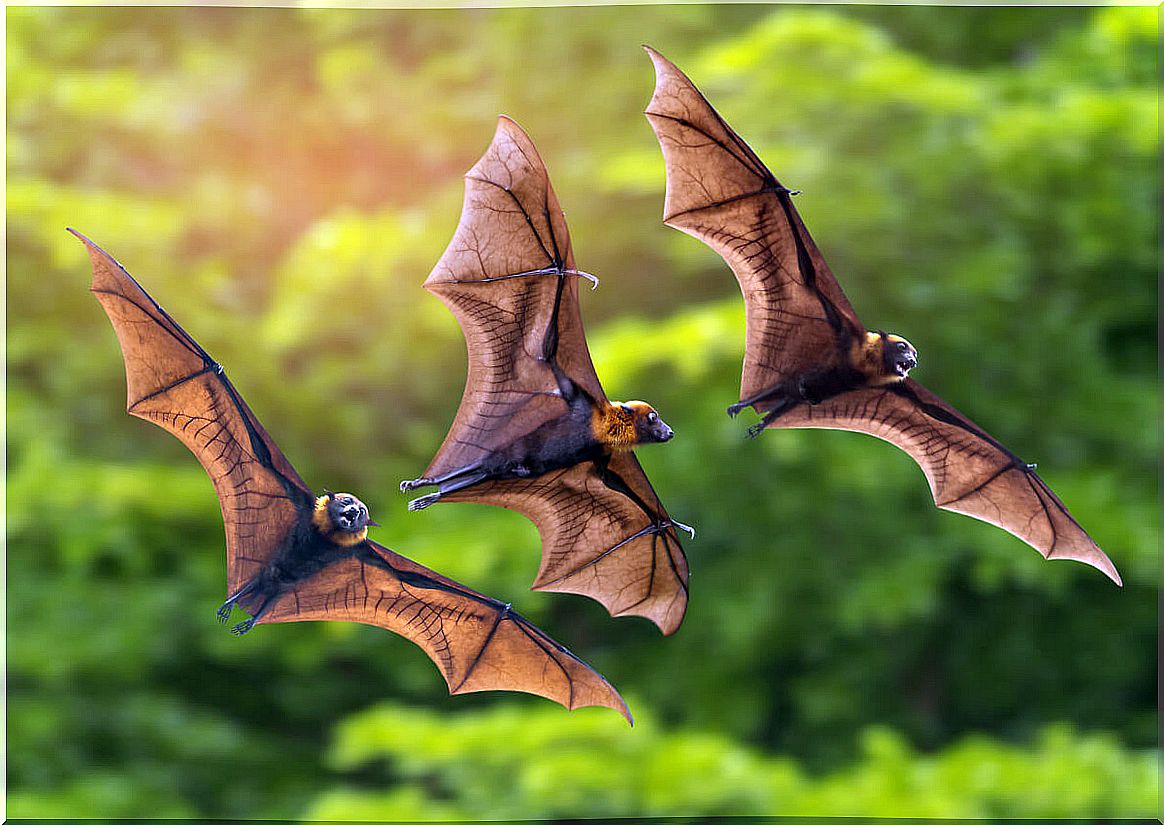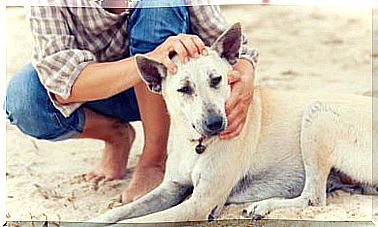8 Characteristics Of Fruit Bats

Bats often get a very undeserved bad reputation. They are known as harmful creatures that try to steal the blood of other beings at the slightest opportunity, but this couldn’t be further from the truth. Most bats do not feed on blood and, in fact, many of them are frugivores.
Bats are a very diverse group, which have adapted to different diets and lifestyles. To illustrate that diversity, here are some striking characteristics of one of the most unusual groups of bats: fruit bats.
8 interesting characteristics of fruit bats
These animals are radically different from the idea of a bat that is usually had in the Spanish-speaking world. In the following lines we present some of its curiosities.
1. Megabats or microbats
Bats can be divided into 2 main groups. Both representatives can fly and come from a common ancestor, but have adopted radically different evolutionary strategies.
Microbats are the most typical and well-known. They are normally very small animals, nocturnal and almost blind. They are also the most abundant, with around 85% species.
Fruit bats belong to the other group, the so-called megabats. Specifically, they make up the Pteropodidae family , with some 197 described species.

2. The largest bats
Flying foxes are the largest bats in existence. Among them, the Philippine diadem bat ( Acerodon jubatus ) stands out, which is considered the largest of all. This animal is capable of reaching almost 30 centimeters in length, 1.70 meters in wingspan and 1.5 kilos in weight.
Other giant representatives of this group are the great flying fox ( Pteropus neohibernicus ) and the Indian flying fox ( Pteropus medius ), which reach a weight similar to Acerodon jubatus, but have a smaller wingspan.
3. Daytime bats?
Although it is known that bats are only active at night, this is not the case for all of them. Most fruit bats are nocturnal or twilight, but some species are primarily diurnal. These species inhabit islands, so it has been hypothesized that their atypical habits are due to a lower presence of predators.
4. They have good eyesight.
Microbats have very poor vision and rely on echolocation to move and find food. On the contrary, megabats have quite large and developed eyes, which give them quite advanced vision, especially in dark conditions.
Most fruit bats are unable to use echolocation, so they use sight and smell, which is also highly developed, to explore their environment.
5. They follow a vegetarian diet
Despite their large size and sharp teeth, these flying mammals are completely harmless. Their diet consists mainly of all kinds of plant matter.
Some species feed on leaves and others on flowers or even nectar, but a large number of them mainly consume fruit, which they locate thanks to their excellent sense of smell.
As endothermic and flying animals, they need to eat a large amount of food to maintain their high metabolism. Some species can consume 2.5 times their weight in fruit each night.
6. Garden animals
Many bats carry out very important functions in ecosystems. This is also true for fruit bats, largely thanks to their eating habits.
When feeding on fruit, these chiroptera end up swallowing the seeds, which pass through the digestive tract and end up being expelled along with the feces away from where the animal ate. This encourages new plants to grow and helps regenerate forests. By feeding on nectar, they can also function as pollinators.
7. These animals are social beings
Like other bats, these animals are highly social. Fruit bats live in generally large colonies, which can number in the hundreds, with which they develop a whole series of complex relationships.
To do this, these mammals communicate using vocalizations, which they learn from other members of the colony when they are young. Different bat colonies can develop different dialects.
8. Where do fruit bats live?
Megabats only inhabit the tropics or subtropics of the Old World. These animals are widely distributed throughout Africa, Asia, Australia, and islands in the Pacific and Indian Oceans.
They are closely associated with forest ecosystems of all kinds, since they depend on trees for food and rest. Some species also use caves or cliffs for sleeping, and Australian populations are recently establishing colonies in urban areas.

According to the IUCN, 70 of the 197 species of fruit bat are currently threatened. This is a very high percentage of species that carry out essential ecosystem services. Therefore, it is essential to conserve them to maintain tropical forests and the rest of the living beings that inhabit them.








